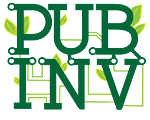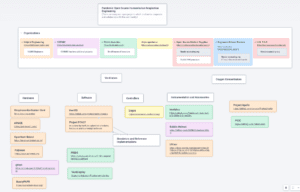By Ben Coombs
“As to diseases, make a habit of two things – to help, or at least to do no harm.”
written by Hippocrates in Epidemics.
A Diagram of Major Humanitarian Engineering Efforts (Link allows zooming)
Early in 2020 the alarm bells rang out. All across the world people tuned into news about a virus that was spreading like wildfire through a little-known city now known to everyone— Wuhan. Quickly the city quarantined and rapidly built temporary hospitals in an effort to quell the outbreak. The world watched with bated breath, only for every country to face the virus themselves. Little was known about the SARS-CoV-2 varies and the disease it causes, COVID-19, except that it resulted in acute respiratory failure. The call went out for more equipment—more PPE and more ventilators.
Health care professionals (HCPs) dressed head-to-toe in PPE has become an iconic image of the pandemic. Stalled by the complexity of the modern healthcare system, hospitals and local clinics couldn’t get PPE fast enough to supply staff on the frontlines. Springboarding off the maker movement, communities came together to make face shields on 3D printers and face masks on sewing machines. This early success spurred further innovation and sparked the idea that perhaps even complex technology could be made in the same vein.
Traditionally the domain of large medical companies, engineers the world over took up the challenge to build an open source ventilator. Over 100 open source ventilators of all kinds were designed and made around the world. Many of these would not leave the workbench and some were more dangerous than helpful, but as knowledge was shared between health care professionals (HCPs) and engineers like never before, sophisticated designs began to emerge.
Open source projects are only as good as the community that supports them. Thankfully, standing beside the engineers are talented people with a range of skills needed to bring an idea to life. New and existing organisations rallied to support the open source projects; to name a few among many, organisations such as Public Invention, Helpful Engineering, OSMS and COSMIC have driven innovation over a sustained and challenging period. Working remotely, across timezones, languages and cultural barriers, an international community has blossomed.
To foster community spirit and collaboration, Public Invention, Helpful Engineering and make.co co-hosted VentCon which brought together speakers from around the world on a diverse range of topics. Several months later, VentCon QARA: Regulatory and Compliance was held in response to the need for further insight into the regulatory landscape.
From the many projects that started, only a handful have made it to 2021. The projects that are continuing have matured, some have achieved FDA EUA status, and some plan on taking it further. Others are pivoting and some are happily ambling along. No matter the current state, open source allows for the current work to be picked up and continued by another determined soul should the need arise again.
The community that sprang up overnight has matured into a haven for open source medical devices. With work, a new, cooperative, modular, open approach to medical devices can be forged. Many connections were made between people who, in pre-COVID-19 times, would never have met. The serendipity of this crisis is that a community has formed that can meet the challenges of the future. While no one can predict what this year will bring, there are ambitions for sustainable development, to answer long-standing challenges such as universal healthcare, water quality and other humanitarian engineering challenges that come our way. We would invite you to join the first virtual PubInvCon—a free online conference celebrating innovations in response to the pandemic and featuring speakers from the aforementioned communities. This is a free event for any and all who wish to learn, connect and get involved. It’s a new year and in 2021: there is work to be done.

